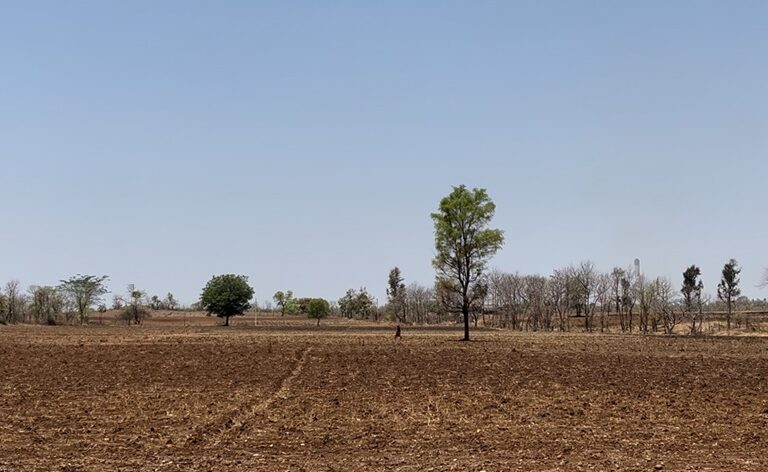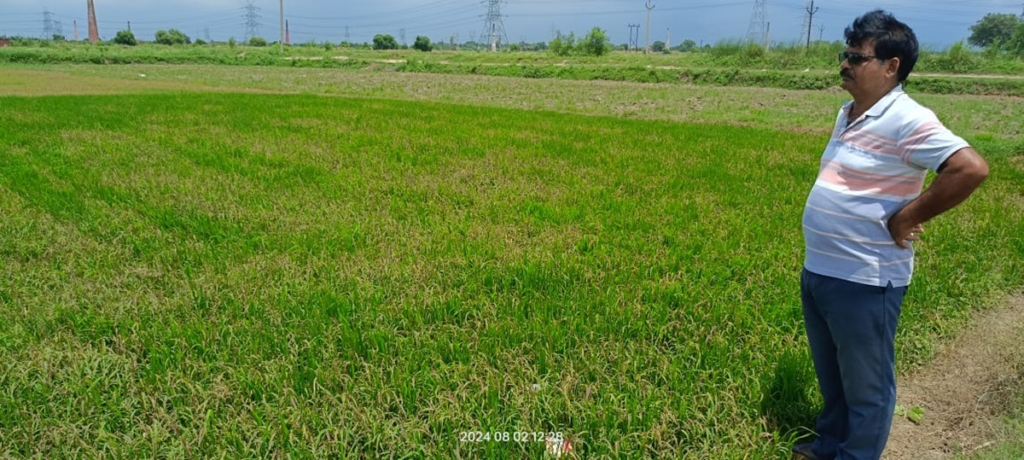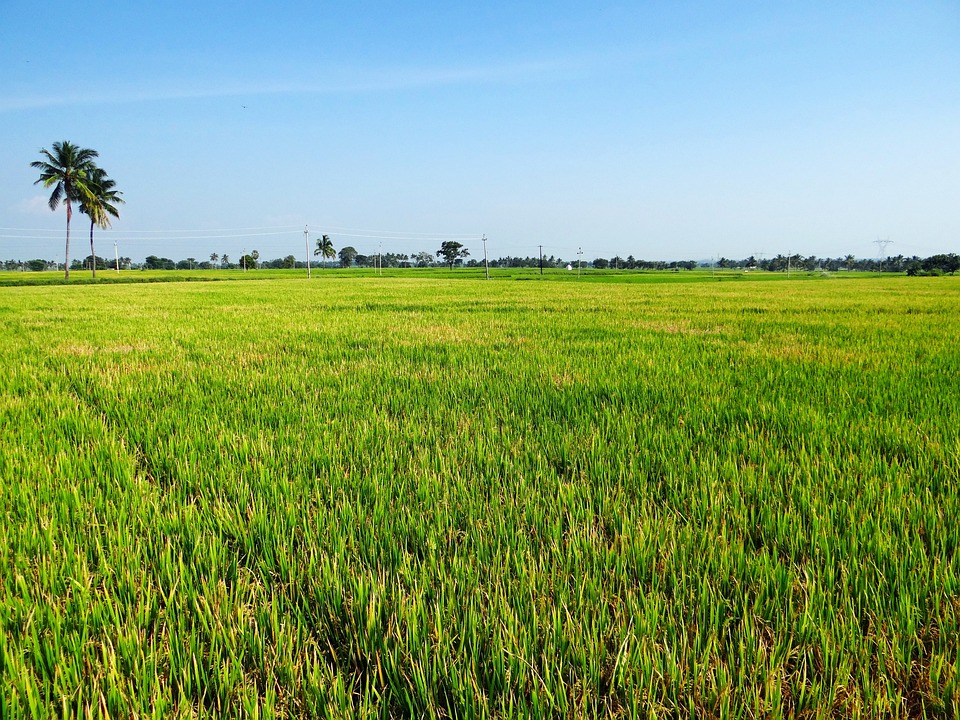Key Upshots:
* With rain deficit in the Indo-Gangetic Plains several states of the region draught.
* Climate Scientists forecast a downward movement of Southwest monsoon for the past decade.
* The Indo-Gengetic Plain is considered a breadbasket for India and doles out more than half of total agro produce.
Rice exports have been halted for the past years, no thanks to the weather frenzy.
Sherpuria Goswami, a proud owner of a small piece of land, honours his penchant for farming but the landholding is so tiny that his family needs are barely met, where there are 18 members in the family.
Driven by the circumstances, the farmer in Nadiyali village in Haryana sought a few hectares (8 exactly) on lease on which he planted paddy, the most crucial kharif crop of our country.
India is lauded as the global leader in crop production which is tiny in size.
Mr Goswami asserts, “I pay fifty thousand rupees per acre (0.4 hectares) per year for the land I take on lease, along with my four brothers, to grow paddy in kharif and wheat in rabi season.”
But no end to his woes and as monsoon season nears its end, more troubles will likely be in the pipeline.
This is also because paddy consumes a lot of water and its healthy production depends upon rainfall in the right amount and at the right time.
He laments, “I planted paddy in the first week of July using water from tubewell [groundwater] and was hoping for a good harvest. But there has been no rainfall.”
IMD Website Presents The Grim Picture:
The weather forecasts in India are officially claimed and validated by the India Meteorological Department and its official website indicates rainfall falling below normal in Haryana (by 18%) as of August 13.
Now when we focus on Mr Goswami’s village, this falls in Ambala district whose rain reception is even lower than the rest, I.e. 29%.
He doesn’t stop here, “It’s been a series of losses for us. Last year in July, unprecedented floods destroyed the paddy we had planted.
Our farmlands were covered in several feet of debris. And this year, drought conditions have affected our paddy crop.
There has been some rainfall in the past couple of days, but a healthy paddy crop needs a lot more,”
Monsoon Brought Little Watery Relief:
Akin to Mr Goswami, millions of other farmers are in the same boat which sails firmly and relentlessly but in the sea of misery and helplessness.
Most of them are not petty but paddy farmers in the Indo-Gangetic plains of North India (IGP).
The First Half Of the South-west Monsoon Was Crunched:
Several states located across the IGP have had scanty rainfall from June 01 through August 15 and therefore farmers are worried.
This is also because of the fact the country measures a higher degree of its annual rainfall during this time, say around 78% but this was an upset.
Scientists thud great significance to primary 2 months as Kharif crops are sowed (case in point paddy for that spicy Biryani) and water need is high for efficient irrigation.
Punjab Is Under-Rained Too:
Going by the IMD website, the state which ranks in higher rice production, also reflected a steep fall in the rainfall by 34% from June 01 till August 15.

Other States Fell Short Too:
Well, dear reader, Mother Nature remained angry with other states as well and spitted less on us. For instance, the state of Uttar Pradesh got below 8% of annual rainfall while Bihar registered below 23%.
Keeping up the trend, Jharkhand fell below 14% and West Bengal left behind the 21% mark, as per the IMD website as data released on August 15.
Why Should This Be A Big Worry?
As the primary rice-producing states in India, the lack of rainfall in these Indo-Gangetic Plains states is concerning for the nation.
The nation’s breadbasket is the IGP area.
With an annual production of over 125 million tonnes, India ranks second in the world for rice production.
It is also the world’s largest exporter, with 18 to 22 million tonnes going to markets each year.
But how much longer will it last?
We have input from another farmer from Punjab, Mr Gurvinder Singh who shares his sorrow that grows out from low rainfall.
Using water from a tubewell, the 52-year-old farmer planted paddy on 2.4 hectares of land.
Just like Goswami, he is also hoping for rain.
A Ranking Official At IMD Pune Turns To Media:
Mr K.S. Hosalikar who sits in the seat of Climate Research and Services Head at IMD Pune says, “There are pockets of red — deficient rainfall — in the Indo-Gangetic belt.
The IMD forecast shows good rainfall in these areas between August 15 and August 19, which should reduce the red dots. But a declining trend of monsoon rainfall over the Indo-Gangetic Plains is a concern and policymakers need to take it into account.”

Indian Government Halts Rice Exports:
The last two years have seen a decrease in rice production, which has already forced the Indian government to limit rice exports.
The Ministry of Consumer Affairs, Food & Public Distribution outlawed the export of broken rice in September 2022 and slapped a 20% tax on non-basmati and non-parboiled rice exports.
The Union government outright banned the export of non-basmati rice one year later, in July 2023.
According to recent news sources, the performance of this year’s monsoon rainfall may lead the Indian government to abolish the export ban on non-basmati rice.
Rainfall In The Indo-Gangetic Plains is Decreasing
The issue of insufficient rainfall in India’s northern plains extends beyond the current monsoon season.
Over the last ten or so years, the Indo-Gangetic belt has seen a decline in rainfall.
According to recent research conducted by the independent think tank Council on Energy, Environment and Water (CEEW), 11% of the 4,419 tehsils studied saw a decrease in rainfall, especially in the past ten years, from 2012 to 2022.
The study examined southwest monsoon rainfall data over the previous forty years.
The CEEW study titled Decoding India’s Changing Monsoon Pattern captures,
“These are in the Indo-Gangetic plains, which contribute to more than half of India’s agricultural production, northeastern India, and the Indian Himalayan region.”
To add heft, we have Mr Rajeev Nair, an acclaimed climate scientist who was also secretary of the Ministry of Earth Sciences, revealing to the media, “There could be many reasons for that. In 2021 and 2022, we had La Niña years, which caused the monsoon trough, a belt of low-pressure zone, to be located south of its position.
Therefore, monsoon lows moved along a southern position. It is the monsoon lows and depressions that contribute rainfall over the IGP.”
He claims that two things are going on:”First, the creation of the monsoon depression is delayed.
This year was no exception to the wait.
The first depression should typically appear around June 15. Second, monsoon depressions are happening less frequently.
Monsoon rainfall over IGP has been observed to be diminishing in several study investigations.
India’s Climate Research Agenda: 2030 and Beyond, a publication by the Department of Science and Technology (DST), mentions the following in Chapter 7:
“Most of the declining trend in the observed summer monsoon rainfall is centred over the Indo-Gangetic Plain, the northeast region, and the Western Ghats.”
That chapter in the DST report was written by Professor Vimal Mishra of Indian Institute of Technology Gandhinagar (IIT-G) in Gujarat.
The institute’s Water and Climate Lab is led by him as well.
Mr Vimal Mishra equips the media with critical insights, “There has been a significant decline in southwest monsoon rainfall over the Ganga river basin in north India in the past 50 years.
States like Uttar Pradesh and Bihar are facing frequent droughts every monsoon season. Since 2009, there have been some 13 years of rainfall deficit in these states.”
He states that there are three possible explanations for the decreasing pattern of rainfall in the Indo-Gangetic Plains.
He endorses, “The Indian Ocean is warming rapidly, and the thermal gradient that is required to strengthen the monsoon system is weakening,”
The temperature differential between the ocean and the land is known as the thermal gradient.
“For a good monsoon, the temperature over land should be very hot, and over the ocean, it should be cool. But since the ocean is warming rapidly, the flow of the monsoon in the Indo-Gangetic Plains is weakening,” he simplifies.
Air Pollution Wreak havoc:
Aerosols are tiny particles suspended in the atmosphere, and they are related to the second theory.
Human-caused aerosols, such as those released by smokestacks, automobile exhausts, and wildfires, have an impact on the climate and slow down winds close to the surface, which decreases precipitation.
“The Indo-Gangetic Plains are notorious for high levels of air pollution throughout the year. It is believed that high pollution in the region also weakens the monsoon,” shares Mr Vimal Mishra.
Groundwater management and localized weather forecasting are required.
Mr. Vimal Mishra predicts that as global temperatures rise, precipitation patterns will likely become more variable, hastening the depletion of groundwater.
He affirms, “The Indo-Gangetic Plains are important for food production, and farmers there, practice intensive irrigation using groundwater.
Imagine if, in the future, the monsoon fails for two consecutive years; this region may not have enough groundwater reserves to facilitate farming activities.
It is a huge threat to the income of farmers and also the country’s food security.”
For the past few years, Megh Pyne Abhiyaan’s creator, Eklavya Prasad has been addressing water management challenges in Bihar and Jharkhand.
Regarding the difficulties that the Indo-Gangetic Plains’ shifting rainfall patterns will probably provide in the future, he concurs with Vimal Mishra.
Mr. Prasad suggests collecting more decentralized data and monitoring rainfall at the panchayat level.
This will aid in agricultural planning and water budgeting at the village level.
Mr Prasad complains, “In Bihar, there is a trend of deficient rainfall during the monsoon season, and just before the end of the season, there is extremely heavy rainfall, often leading to floods. This way, drought-hit farmers cannot even avail compensation, and whatever they have planted, is washed away.”
He makes a critical addition, “In Jharkhand, where a large number of tribal farmers do rainfed subsistence farming, sowing has to be completed by July. But June and July are increasingly dry.”
“What farmers need is a more decentralised forecast of rainfall and local weather conditions so that they can take a timely decision on which crops to grow.”
He claims that the Jal Shakti Abhiyan of the Ministry of Jal Shakti is equipped to handle such tasks.
Well, dear reader, it remains to be seen how far would such efforts be to fruition. At a time, when we witness waterlogging in big cities during monsoon, our farmlands clamour for water. There should be a tactful water management mechanism in place to tackle the situation tactfully.







3 Comments
Hi, I’m Jack. Your website has become my go-to destination for expert advice and knowledge. Keep up the fantastic work!
Fascinating blog! Is your theme custom made or did you download it from somewhere? A theme like yours with a few simple tweeks would really make my blog stand out. Please let me know where you got your design. Cheers
I have been exploring for a little for any high-quality articles or weblog posts in this kind of area . Exploring in Yahoo I eventually stumbled upon this site. Studying this info So i¦m happy to convey that I’ve an incredibly good uncanny feeling I discovered exactly what I needed. I such a lot certainly will make certain to don¦t put out of your mind this site and give it a look regularly.